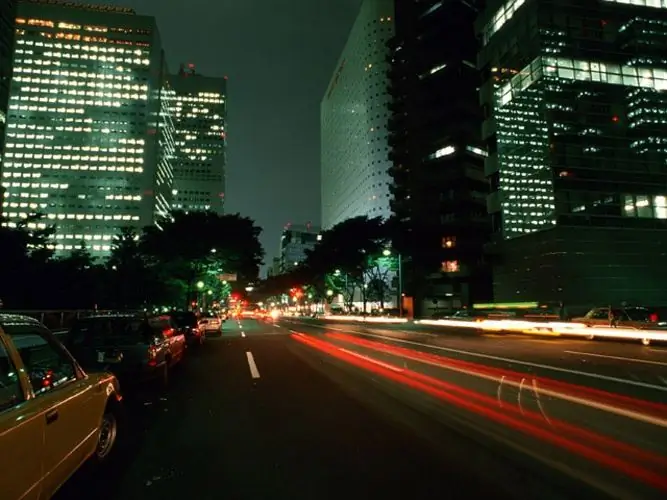Photos of the city at night are especially eye-catching. Even familiar streets look completely new, interesting lines remain from the headlights, and street lighting creates a holiday effect. In order for the photos of the city at night to not disappoint you, you should adhere to some rules for shooting in the dark.

It is necessary
- - Camera;
- - tripod;
- - remote release or release cable;
- - flash.
Instructions
Step 1
Shoot a city at night in Aperture Priority Bracketing. The exposure time must be set to more than 10 seconds. Precisely in order to avoid vibration during exposure, a tripod and a release cable are required for night photography.
Step 2
Remove the UV protection and various filters attached to the lens. If you do not do this, glare, overexposure or splitting may occur. It is recommended to install a hood to avoid side beams and reflections from side objects.
Step 3
If you want to use flash, turn on slow sync mode. This is necessary so that not only people or objects caught in the flash are visible in the photo, but also the background behind them. If your camera does not have a slow sync function, set the exposure time manually. Try different shutter speeds to determine the best result.
Step 4
Very interesting pictures are obtained by overlaying frames. To do this, first photograph the view of the city at night. Choose a composition so that in the place where the moon will later be located, there is an empty sky. Then you need to photograph the moon itself. For this, it is better to use a telephoto lens. Then, using Photoshop, overlay one frame on top of another.
Step 5
To get the effect of light trails from moving objects in night photographs, use the long exposure mode. The same effect can be obtained by superimposing several shots taken with a short period of time from one place.






